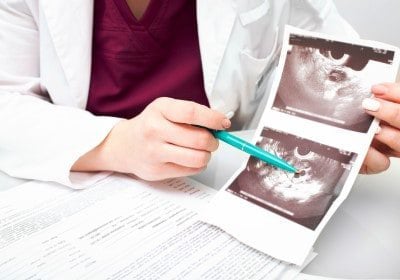If you’ve been researching IVF or have recently started your IVF journey, you might have heard the word “follicles” pop up. Maybe you aren’t entirely sure what it means or perhaps you have some idea but you simply want more information. So, what is a follicle exactly?
Follicles are fluid-filled sacs found in a woman’s ovaries. These sacs contain immature and developing eggs. When the follicle has grown to the correct size, it ruptures, releasing a mature egg for fertilization. For pregnancy to occur, sperm must fertilize the egg within 12 to 24 hours of its release. If the egg is not fertilized, the uterine lining sheds, which is known as menstruation.
In this article, we’re going to take a closer look at follicles, specifically during the IVF process. What are different classes of follicles? What else should you know? Let’s take a look.
Primordial vs. Antral vs. Mature Follicles
During a woman’s menstrual cycle, follicles mature at about day 10 in a typical 28-day cycle. This happens due to the pituitary gland releasing the follicle-stimulating hormone (FSH). At different stages, these follicles mature into different classes, including primordial follicles, antral follicles, and eventually into mature follicles.
Primordial follicles are the first class of follicles, which consist of one oocyte (an ovarian cell) surrounded by a single layer of granulosa cells. These follicles may further remain dormant, receive stimulation to become antral then mature follicles, or eventually die.
Antral follicles, on the other hand, are small follicles that measure about two to nine millimeters. These follicles can be measured via an ultrasound, and their number indicates the ovarian reserve present. Antral follicles are also frequently referred to as “resting follicles.” With the stimulation of FSH, these follicles can become mature follicles, leading to the release of an egg.
Lastly, mature follicles are about 16 to 20 millimeters in diameter. This follicle is large enough to ovulate, which means it ruptures and releases an egg. Afterwards, this follicle will go on to become the corpus luteum, which plays an important part in maintaining pregnancy.
Follicles Development During IVF
During IVF (in vitro fertilization), follicle development is monitored very closely. Ideally, stimulation of the follicles should result in at least three mature follicles. This should happen before the IVF trigger shot. We explore all of this in more detail below.
IVF Ovarian Stimulation
In IVF, ovarian stimulation involves IVF injections, including FSH and LH, to stimulate your ovaries to produce mature eggs. This is necessary so that the eggs can be retrieved and combined with the sperm in a laboratory to create an embryo, which is then implanted into the uterus.
Ideally, you want to maximize your chances by having as many follicles mature as possible. As such, this stimulation phase involves about two weeks of injections so that many follicles mature. In some cases, this phase may take longer depending on the pace of follicle maturation.
Follicle Monitoring
Throughout the process, your fertility team monitors your follicles. Typically, this is done via the use of an ultrasound device which can help detect the follicle size. Ideally, your doctors look for about 10 to 15 antral follicles. However, this number may be lower depending on your age and health.
IVF Trigger Shot
The IVF trigger shot is an injection of the human chorionic gonadotropin (hCG), also known as the “pregnancy hormone.” This shot helps the ovaries release the mature eggs, which is why it’s used right before the egg retrieval process in IVF.
Basically, the trigger shot stimulates the meiosis process, which is when the egg divides and the chromosomes in the egg reduce to 23 (the required number for fertilization). Yet, before these eggs are released naturally, your fertility team will perform the egg retrieval procedure, collecting the mature eggs so that the sperm can fertilize them in a laboratory setting.
Number of Follicles Needed for IVF
The required number of follicles for IVF is usually between eight and 15 mature follicles, depending on your doctor’s recommendations for your specific situation. Three follicles are usually the minimum amount for the trigger shot and egg retrieval process to take place.
Ideal Follicle Size for IVF
The ideal follicle size for IVF trigger shots is when two to three follicles have reached about 17 to 18 millimeters in diameter. An ideal IVF follicle size for egg retrieval is typically around 15 to 22 millimeters in size, which falls right in line with the ideal size for an IVF trigger shot. Your fertility team will closely monitor the size of your follicles, and time everything out accordingly.
Follicles in Egg Donation
An egg donor undergoes a similar process to what is described above. Essentially, for IVF, it’s always a numbers game. The more follicles there are, the more eggs there are. This means there are more embryos to work with and a higher probability of achieving success.
At ELITE IVF, we guarantee, at least, four high-quality blastocysts, which are “Day 5” embryos, from a follicular count of between 10 and 20 mature follicles (for a young egg donor).
The ELITE IVF team is here for you. When you’re ready to begin your fertility journey, ELITE IVF can help. Contact us today. Together, we can work toward making your baby dreams a reality.


